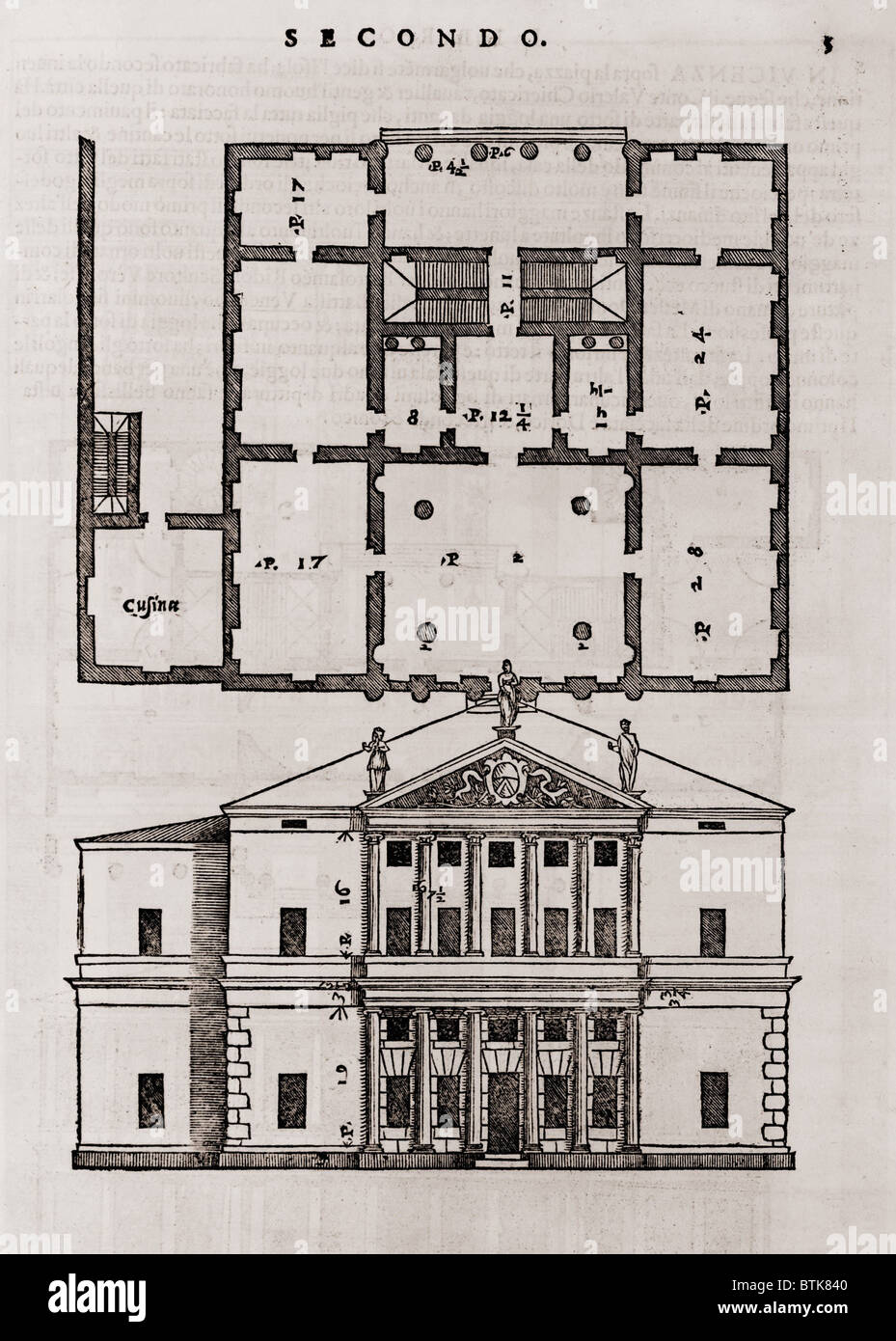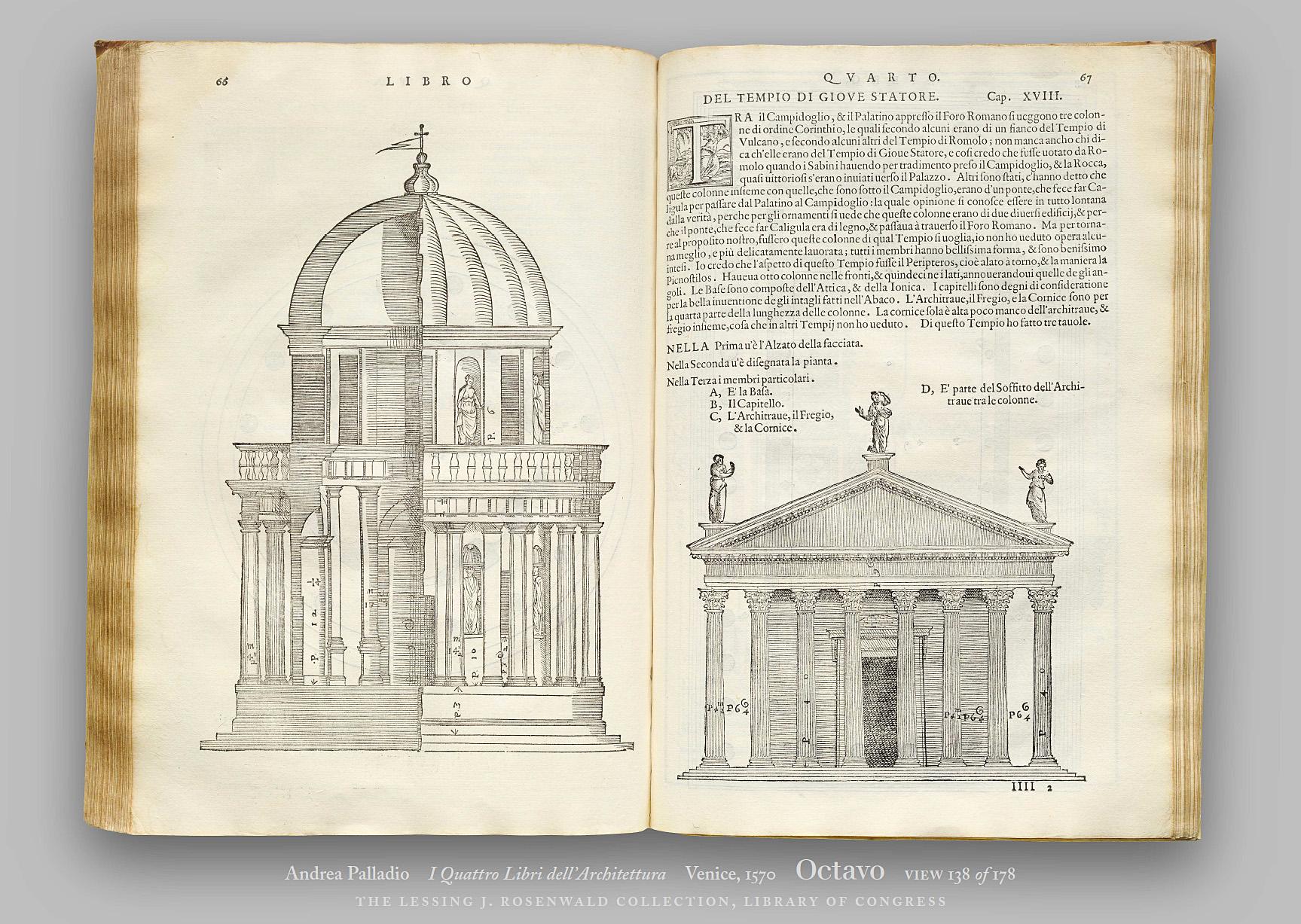
The south-eastern loggia with an inscription reading “Marius Capra Gabrielis F(ilius)” (Marius Capra son of Gabriel). Almerico’s aim was to create a temple to himself more than a house, indeed. It’s possibly because of this reason that Palladio designed the building with a central plan, a semispherical dome topped by a lantern, and an extremely rich decorative apparatus all elements which were typical of churches more than private residences. Therefore, he didn’t need a large house but he wanted it to be a truly magnificent and sumptuous one. Almerico was indeed a retired priest who, after a successful career in Rome, had decided to go back to his home town, Vicenza, and build a splendid abode where to live the last part of his life. The reason is that Palladio was commissioned by Paolo Almerico the design of a villa for a single owner, the unmarried Almerico himself.

The main hall’s proportions are beautiful, just like the floors and the bedrooms, nonetheless it could barely be accepted as a summer residence for a distinguished family». Acquired by count Attilio Valmarana in 1912, the villa is owned today by his heirs and open to the public since 1980.ĭespite its monumental appearance, La Rotonda is a relatively small building.Īs Johann Wolfgang von Goethe wrote about it in his Italian Journey (1816): «The interior can certainly be described as habitable, but not made to be lived in. Finally, the lower part of the central circular hall was decorated by French painter Louis Dorigny in the second half of the 17th century. Most of the interior decoration was completed by 1630 circa it comprises impressive fresco paintings by various late-Renaissance artists including Anselmo Canera and Alessandro Maganza, sculptures by Lorenzo Rubini e Gianbattista Albanese, and stucco decorations by Ottavio Ridolfi and Domenico Fontana, among others. Scamozzi made several changes to Palladio’s original design for example, he arguably modified the shape of the dome – which in Palladio’s The Four Books of Architecture is as a much taller semi-circular dome – to resemble that of the Pantheon in Rome, though it is debated whether the change was made by Scamozzi of by Palladio himself.Įxterior views of Villa La Rotonda from the south and from the south-west.

For that reason, La Rotonda is also known as Villa Capra or Villa Almerico Capra. The design of the villa was commissioned to Palladio by wealthy Venetian priest Paolo Almerico in 1566 after the death of Palladio (1580), the building was completed in 1603 by architect Vincenzo Scamozzi for the brothers Odorico and Mario Capra who had acquired it in 1591. Located in the middle of a beautiful garden on a small hill on the outskirts of Vicenza, the villa is a Unesco World Heritage Site since 1994. Villa La Rotonda is a 16th-century country house near Vicenza, northern Italy, and one of the most famous buildings designed by Renaissance architect Andrea Palladio.


 0 kommentar(er)
0 kommentar(er)
